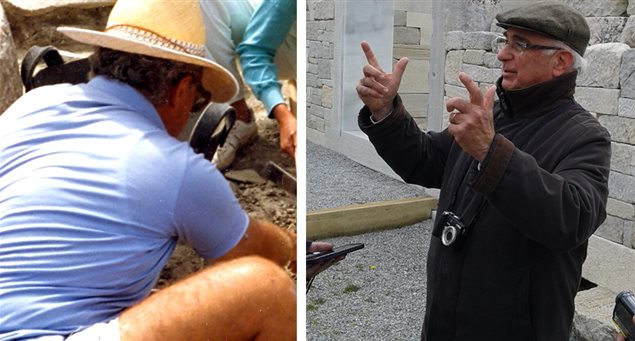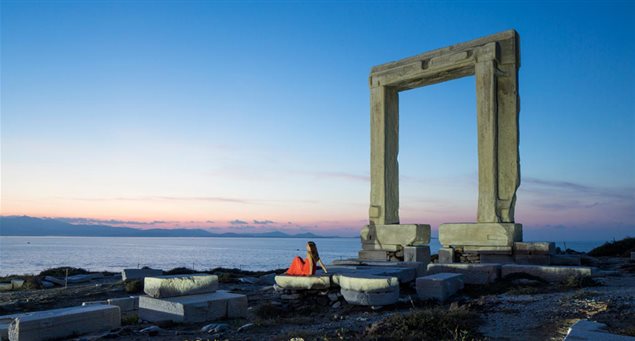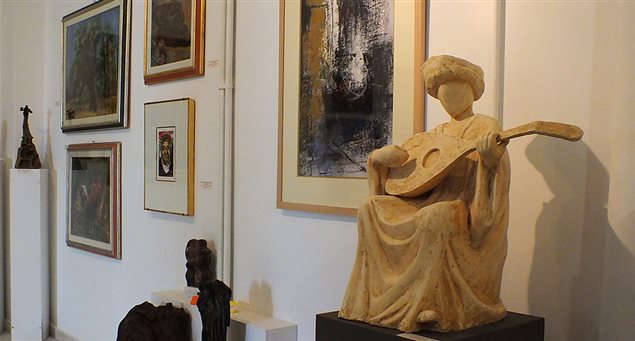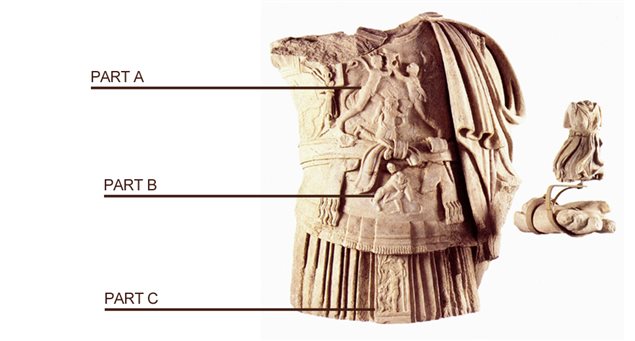
Vassilios Lambrinoudakis is emeritus professor of archeology at the University of Athens and honorary citizen of Naxos. Mr. Lambrinoudakis is credited with conducting research, excavation and restoration of the island’s many significant archaeological monuments.
For over 50 years, archaeologist Vassilios Lambrinoudakis has worked on some of the most important excavations on Naxos: the Temple of Demeter, at Gyroula, Sagri; the prehistoric Mycenaean city of Grotta; the ancient aqueduct of the island; and Temple of Dionysus at Yria and others.
Vassilios Lambrinoudakis is emeritus professor of archeology at the University of Athens and honorary citizen of Naxos. Mr. Lambrinoudakis is credited with conducting research, excavation and restoration of the island’s many significant archaeological monuments.
For over 50 years, archaeologist Vassilios Lambrinoudakis has worked on some of the most important excavations on Naxos: the Temple of Demeter, at Gyroula, Sagri; the prehistoric Mycenaean city of Grotta; the ancient aqueduct of the island; and Temple of Dionysus at Yria and others.
1.When did you begin working on excavations on the island? With what project and at what phase did you join the team?
VL- “I started during my last year of studies at the University, in 1961, at the excavation site of the Mycenaean city (15th-11th century BC) of Grotta, Naxos and Early Cycladic-Mycenaean (3rd-2nd millennium BC) cemetery on the neighboring hills of Aplomata. It was there, and in Gyroula, that my professor Nikolaos Kontoleon, had been digging since 1949. In 1961, of course, this was still considered the early stages of excavation. I continued to work with him until 1975 when I took over the direction of the excavations.”
2. In regards to the ancient monuments, temples and archaeological finds, what distinguishes Naxos from other Aegean, Cycladic islands and areas of Greece?
VL-“Naxos peaked during two periods in antiquity: first, in the 3rd millennium BC, in which it pioneered in the production of the famous Cycladic marble figurines and, second, in the early 1st millennium BC (8th-6th centuries BC), in which it again was a pioneer in architecture creating the architecture Ionic style of island marble; the first monumental marble statues; fine art painted ceramics/pottery.”
3. How many works have you performed excavations on Naxos? And if you may, for each, please share with us the first three words that come to mind or a sentence on what each one has meant for you?
VL-
a) Grotta – Aplomata – Mitropolis Square: “A city whose burial grounds were in continuous occupation from the 4th BC millennium. A portion of these cemeteries (protected today and viewable at the onsite museum at Mitropolis Square) evolved from the 11th to the 7th century, a memorial where residents of Grotta would worship their ancestors. Found at the burial grounds were unique Cycladic marble figurines and decorated vases (2nd and 1 BC millennium), now at the Archaeological Museum of Naxos in Chora.”
b) Temple of Dionysus at Yria. “This was an amazing experience for an archaeologist. It begins with the experience of working with an excellent, international and multidisciplinary research team. And of course, the excavation itself. It was very systematic with unique results revealing the principles of Greek architecture and three thousand years’ of worship and life on Naxos.”
c) The Temple of Demeter, at Gyroula, Sagri. “At this site, the same team once again produced unique results. The experience of witnessing the results of your efforts – the restoration of an ancient monument – slowly right before your eyes was truly moving.”
d) The Ancient Aqueduct and Ancient Quarries. “The excavations at these sites brought forth an admiration for the technical knowledge of the ancient citizens but also the local residents who cooperated with us, allowing us to publicly display parts of the aqueduct that were on their property. And of course, the sense of achievement felt in uncovering the unknown tunnel aqueduct.”
4. What is the difference between the 3 “kouroi” statues that are found at different areas of the island? Have there been similar statues found elsewhere other than on Naxos?
VL-“The ancient marble quarries are yet another unique part of Naxos, especially the unfinished statues that have remained there since ancient times. The sculptures were not finished at the quarry. They would be transported without the finishing touches so that any damages incurred during the transport could be fixed and finished at their final destination. The two “kouroi” at Melanes, dated to the first half of the 6th century, and about 5.5 meters (18 feet) long each, remained at the site because of the damage (broken limbs) that occurred when lowering them from the quarry. The statue of Dionysus at Apollonas, from the 2nd half of the 6th century, with a length of 10.5 meters (34 feet), most probably was abandoned when cracks in the marble (on the face) became visible, while at first they had not been.”
5. If a visitor to Naxos has only a few hours to sightsee, what archaeological monument would you recommend they visit and why?
VL- “If their time is very limited, I would recommend a visit the Temple of Dionysus at Yria. It is close to Naxos town, and it is unique, in a large part, because it presents the first stages of monumental Classical architecture and stands as a fine example of an archaeological park surrounded by nature.
If they have a little more time, I would suggest they visit the Temple Demeter at Gyroula, Sagri. Here, too, we see the first steps in the design of Ionic island temples (the all-marble temple, the doorways, the curvatures, the creation of interior artificial space) of the period and, due to the preservation of the temple, in a much clearer way.”
6. Characteristic of the Temple of Demeter is the whiteness of the marble. Was there a specific procedure to get it that white?
VL- “No the marble retains its original white color. Ancient marbles, over time, acquire a light grey tint.”
7. In some of your writings you mention that at times an archaeologist has to play the role of “detective.” Please elaborate on that and how that role relates to the excavations on Naxos.
VL- “An archaeologist must investigate and pursue all possible leads and sources of information. He/she must observe the land, old photographs, tips and tales of the locals, etc. On BC Naxos we knew, as indicated by old photographs, that close to the Byzantine church of St. George at Yria, there was an ancient sanctuary. Although our initial excavations were not forthcoming with information, by asking local farmers in the surrounding area and cross referencing the information they provided with what we already knew, we were led to the site of the ancient temple that we then excavated.”
8. What is your latest project?
VL-“At this time I am collaborating with the Ephorate of Antiquities and the Municipality of Naxos and Small Cyclades assisting them in developing the conditions for the restoration of the Chimarros Tower. When restored, this unique 4th century monument, which has survived almost intact, will be yet another cultural monument and sight of high interest.”
9. A few weeks ago at the Temple of Demeter, where you have worked for more than 50 years and have probably visited “thousands” of times, you asked a member of a group of journalists you were accompanying to take a photograph of you with the group. It seemed quite a moving gesture. Would you mind commenting on that?
VL- “Firstly, I feel privileged each time people learn about and from the monument. And secondly, I feel that as long as I am alive, my presence may contribute to the continued preservation of the monument.”
10. After so many years of working on the island, what are the things that have impressed you the most about the island and its people?
To read the answer to this question, please see related article: “No Place Like Naxos: “On Naxos, I love not Five, but Five Thousand Things”ve Thousand Things”




